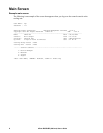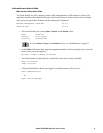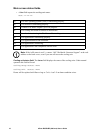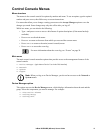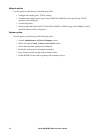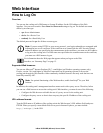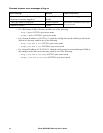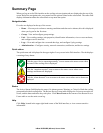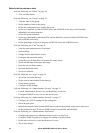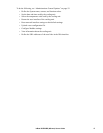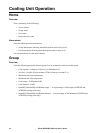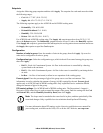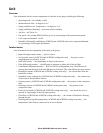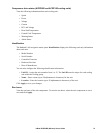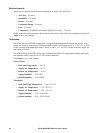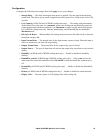InRow RC/RD/RP (600 mm) User’s Guide16
Select a tab to perform a task
To do the following, see “Home” on page 18:
• View and clear alarms.
To do the following, see “Group” on page 18:
• View the status of the group.
• Set the number of units in the group.
• Define the configuration type used by the group.
• Set the cool setpoints. For the ACRP100 series and ACRP500 series only, set the humidify,
dehumidify, and reheat setpoints.
• Set the fan speed preference.
• Set the cool, dehumidify, and reheat PIDs, and the humidify sensitivity band (ACRP100 series
and ACRP500 series only).
• Set the percentage of glycol in the group (ACRC500 series and ACRP500 series).
To do the following, see “Unit” on page 20:
• View the status and properties of each unit.
• Set unit delays.
• Change the unit identification values.
• Configure and control the modes.
• Assign the type of alarm that will activate the output sensor.
• Set the normal state of the input and output.
• Reset the unit run hours alarms.
• Set alarm threshold values.
• Set service intervals.
To do the following, see “Logs” on page 24:
• Access the event and data logs.
• Set the interval and rotation for the data log.
• Create data log graphs.
• Configure Syslog settings.
To do the following, see “Administration: Security” on page 32:
• Control Administrator, Device User, and Read-Only user access.
• Configure RADIUS access, servers, and server secret.
To do the following, see “Administration: Network” on page 37:
• Configure new TCP/IP settings for the cooling unit.
• Select the port speed.
• Identify the Domain Name System (DNS) Server and test the network connection to that server.
• Define settings for the FTP server, SNMP, Control Console/SSH, and Web/SSL.
To do the following, see “Administration: Notification” .
• Configure the actions to be taken based on an event’s severity level.
• Configure SNMP Trap Receiver settings for sending event-based traps.
• Define who will receive e-mail notifications of events.
• Test e-mail settings.



